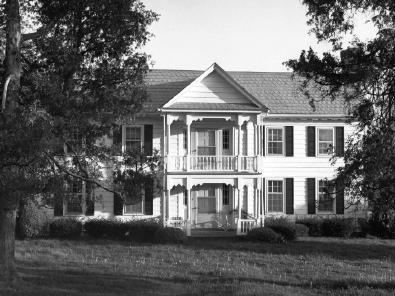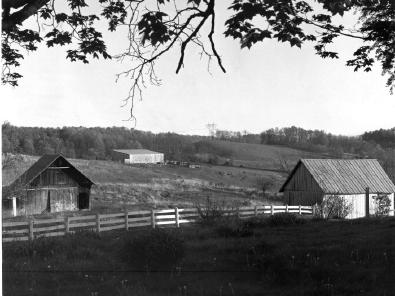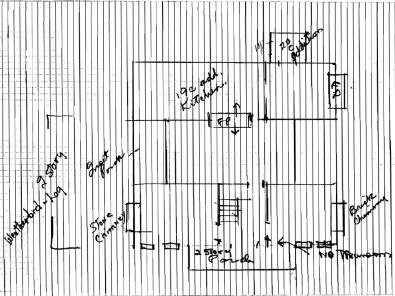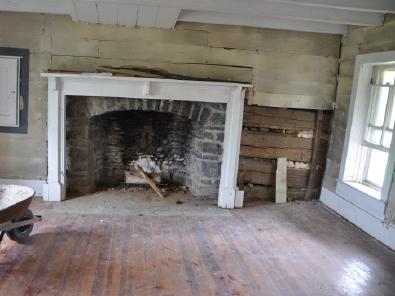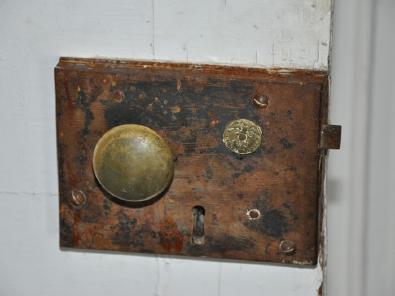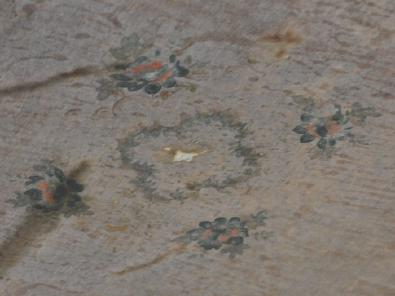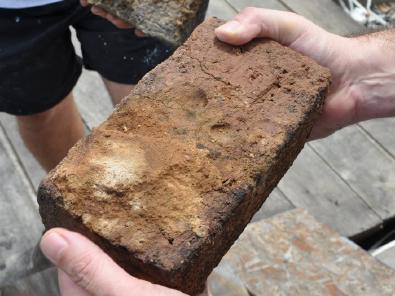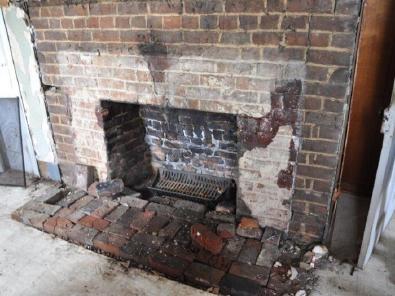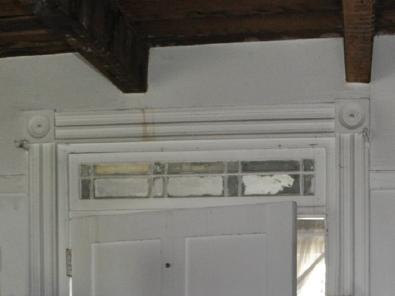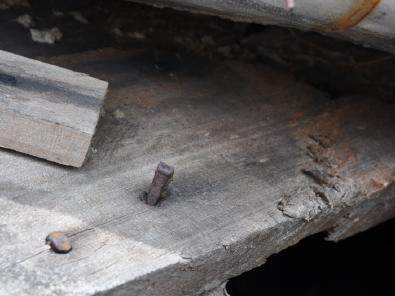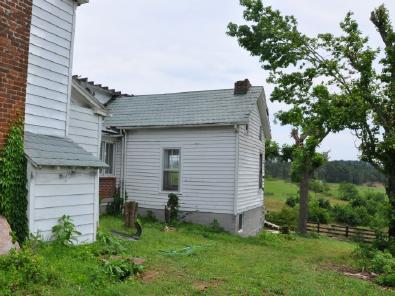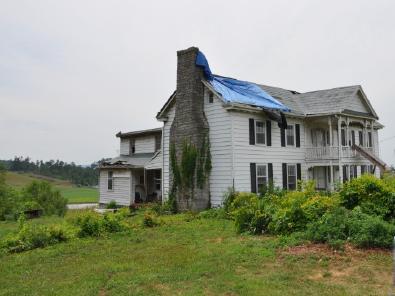Washington Co. > Homes and Buildings > Old Stagecoach Inn
Map link and Source List follows narrative.
Francis Kincannon was the first owner of the land on which the Talbert Inn (also known as the “Old Stagecoach Inn”) now stands. The Kincannon family settled along the Stage Road (also known as the “Great Rd." or "Main Rd.") in Washington County about 1769. The property, first surveyed in 1774, was granted to Francis Kincannon as two contiguous parcels: 328 acres in 1783 (surveyed in 1783) and 390 acres to the east in 1785 (surveyed 1782). The Old Stage Rd ran diagonally across this eastern tract. Facing the road from the south side for well over 200 years sits the structure known as the Talbert Inn.
Francis Kincannon was the father of several children, including sons Mathew and George. When Francis's 328 acre parcel was surveyed Mathew was listed as a neighbor on the east side telling us he was living on the 390 acre parcel by 1783. However when Francis Kincannon wrote his will in 1795 he left the 390 acres to George and noted that he was living on it. The front section of the old inn is reported to date to around 1780, therefore suggesting it was constructed by a member of the Kincannon family.
In Oct. 1807 George Kincannon and his wife Ann sold 328 acres (they had previously sold 70 acres to James Clark) to Bazel Talbert for $2,666.66. Bazel enlarged the property in 1816 when he purchased 34 ½ acres on the north from Ezra Pierce. Several commonly cited descriptions of the inn state that Bazel Talbert bought the land from Francis Kincannon in 1780 and built the inn. That is not accurate; Bazel did not purchase the property for another 27 years. Another source states that Thomas Stewart ran a store on the property in the 1780s and sold the land to Basil Talbert in 1802. That is also inaccurate. Thomas Stewart sold 160 acres to Bazel Talbert in Sept. 1800 but that land was on the upper reaches of Little Holston Creek some distance northwest of the inn, and nowhere near the Great Rd.
Although Bazel and his wife Mary (Logan) Talbert may have used their home on the Great Rd. as an inn from the time they first acquired it, they do not appear to have acquired a license to do so until 1815. The Washington Co. Personal Property tax list for that year indicated that "Bazel Talbutt" paid for a license for a house of private entertainment (an inn or tavern providing food and overnight accommodation but not alcohol). Bazel also held a license to run a house of private entertainment in 1818.
In 1815 a special tax assessment recorded additional information not provided in other tax years. “Bazell Tolbert”'s entry noted that he owned several properties, including a farm on the road from Wythe [Co.] to Abingdon adjacent to John Robertson [Robinson] and Moses Edmondson containing 360 acres valued at $3,000. The property held a 2 story log dwelling house, 30 feet by 24 feet, as well as a log barn and 4 log “cabins” [generally slave quarters]. This location (and the neighbors) is consistent with the farm and house on the Stage Rd.
It is difficult now to imagine running an inn, providing food and lodging for travelers, in a home that probably consisted of 2 rooms downstairs, and a similar number upstairs. However, that was typical of the day. One room may have been set aside for female travelers who often shared a bed. The stagecoach drivers and wagon drivers typically slept on the floor in a downstairs room on sleeping rolls which were laid out on the floor. Sometimes a room was set aside for “gentleman travelers”. The sleeping rooms were so small they typically held just one bed. Hence the men usually remained dressed at night and often slept sitting upright. Gentlemen travelers were allowed to remove their boots at night whereas the drivers and wagoners did not.
Bazel Talbert died in Dec. 1818, however Mary Talbert continued to run the inn, probably with the assistance of her 3 youngest children who were not married at the time. Mary's daughter Eliza Talbert married Isaac James Horne in 1827. Following Mary Talbert's death in 1931 Eliza and Isaac Horne gradually purchased the interest of Eliza's siblings in the inn and land immediately around it. They continued to run the inn through the 1830s and 1840s. At some point additional rooms were added at the rear of the home including an indoor kitchen. The structure eventually had 4 chimneys for 8 fireplaces. By the Civil War the exterior had been covered with weather boarding and many of the interior walls had also been paneled. However the ceiling beams and fireplaces in the front rooms speak to the structure's history. Residents of the county remember a large cherry dining room table, created long before the Civil War, which was capable of seating 20 people or which could be separated into 3 smaller tables. A piano was also part of the home's furnishings. It was reported to have been acquired in Baltimore around 1850. The property also held a collection of outbuildings including a log smoke house, a dairy and various sheds and barns which supported both the inn's activities.
By the late 1850s train service expanded to such a degree that the Great Rd. was used more for local rather than long distance travel. The Civil War brought other changes including the death of Eliza and Isaac Horne's son Basil. Eliza and Isaac Horne died in the 1870s, both outliving their other son, William Horne. William's widow Ann Elizabeth (Gose) Horne then ran the farm for many years with the help of her children.
In the spring of 2011 a tornado roared along Rt. 11 in Washington County, damaging many of the old homes in its path. The old Stagecoach Inn did not escape. Its future is uncertain as more and more land around it is converted to commercial use. Many of the photos on this page were taken after the tornado when initial clean-up was underway. They reveal much about the construction of the old inn and provide a glimpse into its historic past.
Related Maps
Glade Spring area - 1821 and 1890 (homes identified by owner/family)
General Sources Used on this Page
- [S1438] Virginia Land Office Grants Q: 395; 5 Jul 1785, granted to Francis Kincannon, 328 acres on the waters of the Middle Fork of the Holston River surveyed 27 Dec. 1783...by virtue of a certificate in right of settlement... entitled to 400 acres of land which was surveyed for him 19 Jan. 1774... actual settlement 1869, Library of Virginia Online.
- [S1438] Virginia Land Office Grants Q: 407; 5 Jul 1785, granted to Francis Kincannon 390 acres by virtue of Virginia Land Office preemption warrant 1,997 dated 22 Dec. 1781...surveyed 28 Oct. 1782, Library of Virginia Online.
- [S616] Francis Kincannon will (1795), Washington Co., Virginia Will Bk 2: 65. The will was written 3 March 1795 and recorded 15 Sept. 1795. Witnesses were David Snodgrass, Daniel Perkins and William Beattie. James Kincannon and John Stewart were named executors.
- [S1707] Washington Co., Virginia Deed Book 3: 615. George and Ann Kincannon to Bazel Talbert, 19 Oct. 1807, for $2,666.66, 328 acres lying on the waters of the Middle Fork of the Holston River adjacent William Beattie, John Orr.
- [S1400] Washington Co., Virginia Deed Book 2: 371. Thomas and Sarah Stewart to Bazil Talert, 16 Sept. 1800, for £285, 160 acres on the waters of Little Holston Creek, part of a greater tract containing 360 acres granted to Thomas Stewart assignee of John Robinson by patent Sept. 20, 1785.
- Jack Hockett, Washington Co., Virginia Personal Property Tax Lists, 1800-1850 (New Papyrus Publishing, 2005-6)
- [S2124] Mary Kegley, Supplement to Southwest Virginia Tax Assessments, p. 27.
- [S2717] "Survey Form", (1992), Stagecoach Inn, file: 095-0102, Department of Historic Resources, Richmond, Virginia. The survey data was partly completed from interviews conducted with Ernest Clark and Bess Robinson of Glade Spring.
- [S2717] "Preliminary Information Request", (1985), Stagecoach Inn, file: 095-0102, Department of Historic Resources, Richmond, Virginia. On Aug. 16, 1985, the State Review Board determined that the Stage Coach Inn met the criteria for entry on the Virginia Landmarks Register, however due to the boards increasing emphasis on registering entire districts of historical significance, the Stage Coach Inn would not be placed in the high priority category.
- [S952] "Historical Houses of Washington County, Virginia", Historical Society of Washington County, Virginia Bulletin Series II, #6 (Spring, 1968): Article titled Old Glade Stagecoach Inn not specifically credited but probably written by Mrs. Phebe Fullerton Blevins around 1958 and first published in the Bristol Herald Courier and the Roanoke Times.
